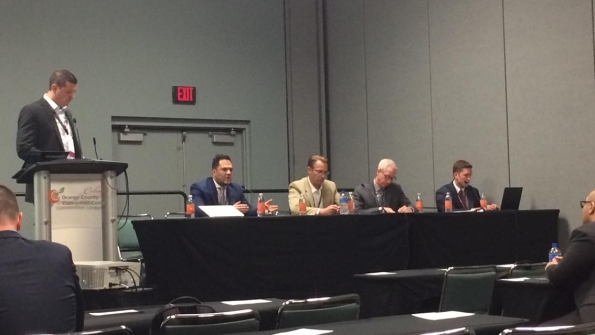A smart city is a safe city
ORLANDO—Black & Veatch annually surveys hundreds of city stakeholders and found that 32% of respondents are creating actionable smart city roadmaps, a 34% increase from the response they received in 2015. A quarter of these respondents said they were already piloting programs. Reducing operating costs and realizing efficiencies, as well as improving public safety and quality of life, are the two primary drivers of theses initiatives, according to Justin Dickstein, who leads the connected communities team at Black & Veatch.
When people talk about the concept of smart cities, they’re usually talking about smart lighting, smart metering, smart transportation systems, but he contends that actually misses the point, Dickstein said during the IWCE 2018 panel discussion titled "Planning a Smart—and Safer—City."
“Sometimes we forget about the whole premise of smart cities,” Dickstein said. “That is to use technology and data to improve the quality of life and make cities services more efficient and sustainable and to help residents connect and engage with the cities in which they live.” He added that the initial concept was “to provide a safer environment for citizens to live work and play … A smart city is a safe city.”
It’s this necessity to improve quality of life and safety issues that should be driving smart-city investment, Brian Shepard, chief operating officer for the Colorado Governor’s Office of Information Technology.
Shepard gave the example of a recent shift in Colorado’s Department of Transportation. For years, many would say widening the highways would alleviate traffic congestion and reduce accidents; however, it was proven to be an ineffective solution. Now, under new leadership and direction, the department is looking to technological solutions to assuage the issues.
“We have to understand that governments don’t have the ability to solve some of our problems anymore without these technologies is huge,” Shepard said.
Kevin Coyne, vice president of advanced services at West Corporation, agreed.
“The outcomes cities are focused on are citizen experience, quality of life and safety,” Coyne said. “Residents are looking for safer streets—for their cities to reduce the amount of collisions and fatalities occurring, they’re looking to enhance mobility capabilities and migrate more from single-occupancy vehicles to multimodal modes of transportation… and enhancing services for all citizens.”
Overall, the panel made the point that when cities think about smart solutions, it can be easy to become lost in the details and lose sight of the original intent of adopting these new technologies in the first place. Solutions should drive safety and quality-of-life outcomes, or they aren’t really solutions at all.














